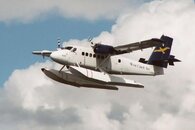OP
Blastman4444
Contributor
The Airline I was taking was US AIRWAYS out of FLL airport it takes off every morning to Phoenix at around 7:10-7:20. I don't take any medication except over the counter stuff for the usual stuff heart burn once in awhile or headache. I was 18 hours out of the water, and I was dehydrated both days. I'm about 40 lbs over weight like most American men at be 42 years old. My body just loved that nitrogen ill just have to extra careful in the future. The HBOT operators said 1/2 the guys they see are using nitrox, and a lot of them have no idea why they got bent they followed all the rules. I just think it's good to talk more about DCS and why not take an extra day of sight seeing. Make sure you hydrate and not when you are heading out on the boat. Dan said you should have to pee when you come up from each dive if you don't you are not hydrated enough the doctor said that alone is a big factor.





 Ok, well, it is a membership organization.
Ok, well, it is a membership organization.
